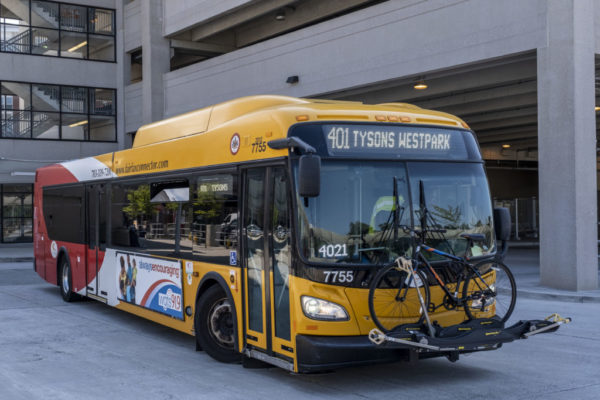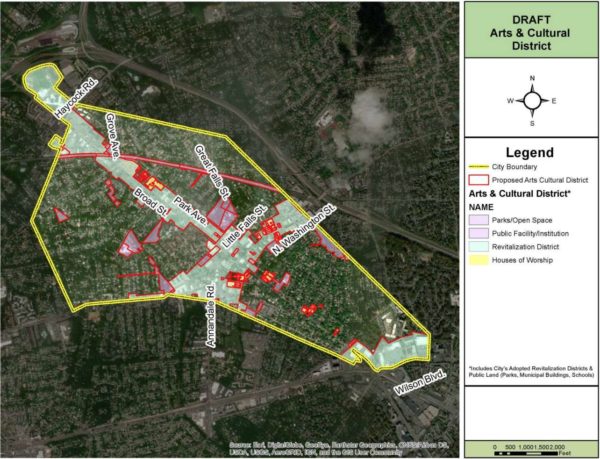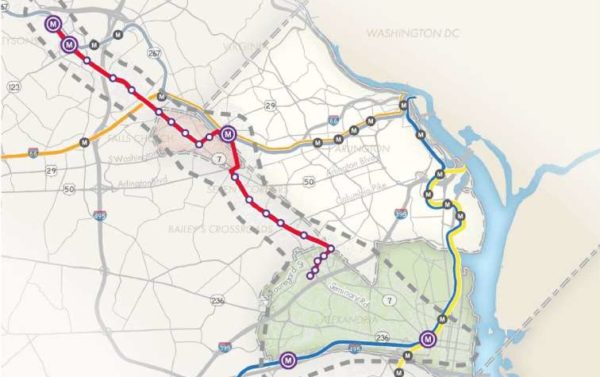
Fairfax County is continuing its efforts to transition to renewable energy with the installation of solar panels on county government and public school buildings, but it will now do so with a different vendor.
The county ended its contract with the company Sigora Solar yesterday (July 1), about 18 months ahead of schedule.
Sigora Solar is one of three vendors awarded contracts to install, manage, and maintain solar energy infrastructure for county government and school buildings in December 2019, when Fairfax County announced what it said was the largest solar power purchase agreement initiative by a Virginia locality to date.
The original contracts with Sigora, Sun Tribe Solar, and Ipsun Power were set to run through Dec. 31, 2022.
However, the county amended its contract with Sigora on June 10 to state that it would be “terminated for convenience” effective July 1. Sigora was designated as the primary contractor for roof-mounted solar panel projects.
Moving forward, the county will now work with Sun Tribe Solar, the secondary contractor for roof-mounted panels and the primary contractor for carport or canopy-mounted panels.
“Under the terms of the agreement, the county leases space on its buildings for the companies to install solar panels that those vendors will own, and the county buys the energy generated by the panels at a fixed price,” Brian Worthy, a public information officer with Fairfax County’s Office of Public Affairs, said.
“However, these companies have the right to decide whether or not to install panels at any buildings identified by the county,” Worthy said. “During the past year and a half, the county selected 30 buildings for solar panels, and we are eager to move forward with these projects.”
The Fairfax County Board of Supervisors has approved leasing necessary roof space at two batches of county-owned properties so far. The first round of eight sites came on Oct. 20, 2020, and another 22 sites were added on March 9.
The sites approved for solar panel installations in the Tysons area are:
- McLean Government Center and Police Station (1437 Balls Hill Road, McLean)
- Wolf Trap Fire Station #42 (1315 Beulah Road, Vienna)
- McLean Community Center (1234 Ingleside Avenue, McLean)
- Thomas Jefferson Library (7415 Arlington Blvd., Falls Church)
- Providence Community Center (3001 Vaden Drive, Fairfax)
- Merrifield Center and Kerrifield Center Garage (8221 Willow Oaks Corporate Drive, Fairfax)
Under the solar power purchase agreements, the installed solar panels will be owned, operated and maintained by the contracted vendors, rather than the county. The county will simply purchase electricity produced by these panels over time.
When the contracts were announced in 2019, the county estimated that the initiative could potentially yield over $60 million in electricity cost avoidance over the terms of the contracts. Additionally, it was projected that approximately 1.73 million megawatt hours of renewable energy could be generated at the county’s facilities.
A long-standing chapter of the Aylor family’s history concluded this week with the groundbreaking of a new housing development in Falls Church.
With members of the family present, the homebuilding company Madison Homes broke ground yesterday (Monday) at 2530 Remington Street on a new private housing community, The Enclave at Aylors Overlook. The site will be developed into 16 new single-family homes over the next year and a half.
“We were delighted to be given the opportunity to purchase the property,” Madison Homes President Russell Rosenberger Jr. said. “Certainly, the ability to honor the Aylor family legacy, we knew that was important to Marvin and his family. Therefore it became important to us also, as we were planning the development of the property.”
Madison Homes purchased the property from the Aylor family, which had owned the five acres since 1957, when Lewis and Virginia Aylor bought it. The couple had moved to the property in 1951, and three generations of the family ultimately lived on it.
“For me, it is kind of sad to be here. I’ve realized life is all about change. For me, it’s my whole life here,” Marvin Aylor, the son of Lewis and Virginia and executor of Lewis’s estate, said. “For my parents — my father — to come down here to live, for me to grow up here and my son to grow up here, it’s a lot to lose, but it did well for us. It put us where we are today.”
Marvin shared that it was his father’s desire for family homes to eventually be built on the site. After deliberating over possible companies to sell the property to, the family chose Madison Homes because of the company’s history and work.
Founded in 1992 in McLean, Madison Homes focuses on in-fill development in the D.C. area. Its existing developments include Chesterbrook Manor in McLean, The Reserve at Tysons Corner apartments, and The Palladium at McLean, according to the company’s website.
“We wanted somebody that had some clout and had a good product,” Marvin said. “We were picky too in the sense that we could be. From what I saw of their work, I wanted my dad’s name to stand for something, and to be here and mean something. That’s part of why we chose [Madison Homes].”
The property is currently in the land development process, which should finish in October.
Rosenberger expects construction on the first houses to begin in September, with models being completed in early 2022. He anticipates the entire development will be completed within 12 to 18 months.
The homes will carry a price tag starting in the $1.7 million range, with sales beginning off site this fall, according to a Madison Homes spokesperson.
“The family quite truthfully did a lot of the hard work on the property,” Rosenberger said. “The family took it through the engineering process with the county. They did a great job. They had the right consultants, engineers and advisors involved in the process. So, we really didn’t have to make any significant changes as we got involved in the property.”
A new private school for early childhood education could open as soon as this summer in Tysons.
Owners Kate and Brian Mulcahy held a groundbreaking ceremony for the Celebree School of Tysons-Jones Branch on Wednesday (March 31). It is the first Virginia location for Celebree School, a network of early childhood education centers.
The school is located on Valo Park’s 16-acre campus at 7950 Jones Branch Drive and will serve infants through pre-kindergarten children.
“Truly, the curriculum, the program we’re going to provide to these kids…it gives me chills,” Kate Mulcahy said. “We are going to give these children the best possible start to life while giving their parents incredible piece of mind and flexibility. We are just so excited to do that.”
Celebree aims to open the school this summer, and pre-enrollment has already begun.
Celebree School announced on April 21, 2020 that it had signed a franchise agreement with the Mulcahys to open a center in Fairfax or Arlington county. The couple signed a lease with Valo Park on Nov. 10 to open the center.
Leaders of organizations representing the Tysons area, including the Tysons Partnership and Tysons Regional Chamber of Commerce, were among those in attendance at the groundbreaking ceremony.
“There is no greater opportunity right now than to serve your community through education and childcare, particularly early childhood education,” Tysons Partnership communications director Drew Sunderland said. “As my fellow parents know, the pandemic’s only amplified this need for quality schools. Childcare facilities has provided lifelines to families.”
Founded in 1994 in Lutherville, Md., Celebree School began franchising in 2019 and has now expanded to over 40 locations in 12 states that are open or under development, adding franchises in New York, Maryland, Virginia, New Jersey, Pennsylvania, and Delaware.
“Today is a huge milestone in so many ways,” Celebree Schools founder, president, and CEO Richard Huffman said.
He called the groundbreaking a meaningful occasion for “not only expanding the brand into Virginia and bringing high quality preschool to families in McLean, Virginia, but also sitting around watching this vision and dream come true of offering this concept and this kind of business to a family like the Mulcahys.”
Fairfax Connector will make a few service changes this summer.
The Fairfax County Board of Supervisors unanimously approved several proposed service changes during its meeting yesterday (Tuesday). The changes will be implemented starting July 10.
Service on Routes 462 and 467 will be enhanced “to improve connectivity between the Dunn Loring and Tysons Corner Metrorail Stations, as well as provide access to employment centers and activity centers along Maple Avenue,” according to the proposal made to the Board of Supervisors.
Route 462 will operate with 30-minute frequency while providing weekday peak-period service between the Dunn Loring and Tysons Corner Metrorail stations.
The realignment of Route 467 comes in response to the opening of a new Cedar Lane Bridge in Vienna.
The route will add Sunday service and provide weekday, midday and evening service as well as weekend service between the Dunn Loring and Tysons Corner Metrorail stations. The new realigned route will service Maple Avenue, and Old Courthouse Road to Gallows Road. It will operate with 40-minute frequency.
Route 422 will be discontinued due to low ridership, and because it duplicates service on other routes, including Routes 462 and 467. It currently operates as a circulator between Boone Boulevard and the Tysons Corner Metrorail station.
The proposal to the board says that eliminating Route 422 would offset the service adjustments to Routes 462 and 467.
Fairfax Connector will also assume operations of five Metrobus routes — Routes 703, 715, 803, 834, and 835 — that link communities to the McLean, East Falls Church, West Falls Church, and Pentagon Metrorail stations.
Route 703 replaces the existing Metrobus Route 3T, which is not currently operating and had been scheduled to be eliminated by the Washington Metropolitan Area Transit Authority this year. The new route will provide weekday and Saturday service, linking Pimmit Hills and Tysons to the McLean and West Falls Church Metrorail stations.
Route 803 replaces existing Metrobus Route 3A, which is operating with reduced levels of service. The route will provide weekday and Saturday service to connect Lake Barcroft, Annandale and North Springfield to the East Falls Church Metrorail station.
Both 703 and 803 will operate with 30-minute frequency during weekday peak periods, 40- to 60-minute frequency during weekday off-peak periods and 45-minute frequency on weekends.
Routes 715, 834, and 835 will all provide peak-period service to replace existing Metrobus routes that are not operating currently. They will operate with a frequency of 30 minutes.
Route 715 replaces Route 15K, which links McLean, Salona Village and Chesterbrook Gardens to the East Falls Church Metrorail station.
Route 834 replaces Route 29C, which connects Northern Virginia Community College, Annandale, and Lincolnia to the Pentagon Metrorail station.
Route 835 replaces Route 29W, which links the Northern Virginia Community College and Willow Woods communities in Annandale to the Pentagon Metrorail Station.
The Fairfax County Department of Transportation announced plans to pursue the service changes in December. The changes carry an estimated capital cost of up to $650,000 to purchase 12 buses from Metro and an additional $400,000 to convert them to the Fairfax Connector fleet, according to county staff.
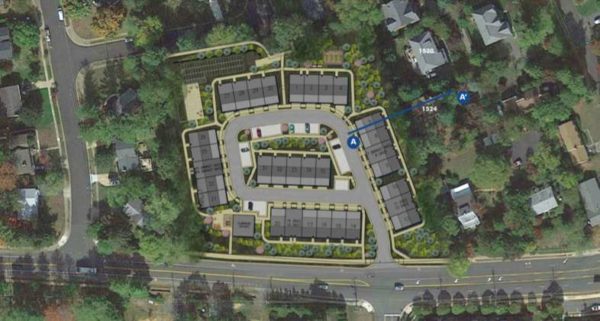
After a two-week delay, the Fairfax County Planning Commission voted on March 17 to support a proposed senior living facility in McLean.
Tri-State Development Companies secured a recommendation from Fairfax County planners in February to build on the 3.23-acre site at 1638 and 1642 Chain Bridge Road. The project would replace the existing single-family dwellings with 35 independent living units, five of which are expected to be sold as affordable.
The commission previously deferred making a decision on the project after a public hearing on March 3. Speakers voiced concerns about the heights of the units, potential traffic congestion, stormwater runoff, and the impact of a proposed clubhouse and patio on an immediate neighbor of the site.
Dranesville District Commissioner John Ulfelder recommended that the Fairfax County Board of Supervisors grant Tri-State’s special exception request after addressing several of the issues raised at the public hearing.
Ulfelder said the building heights would range between 36 and 40 feet, exceeding the 35 feet permitted in a R-3 zone, to allow for certain roof structures of the units to fit the surrounding neighborhoods.
“In addition, due to the typography of the site, the homes are set at a lower grade level than the surrounding homes,” Ulfelder said. “As a result, the roof heights are actually roughly comparable to the neighboring properties.”
In response to suggestions that a traffic signal be installed at the intersection of Chain Bridge and Davidson Road, Ulfelder noted that a traffic analysis predicts the facility would generate only 85 vehicle trips per day — fewer than what would be generated by a by-right development. The analysis also projected fewer than 10 trips in either the morning or evening peak hour.
He added that Virginia Department of Transportation traffic analysis done as part of the ongoing McLean Community Business Center Comprehensive Plan study concluded that a signal at the Chain Bridge/Davidson intersection might not be warranted for 20 years.
Ulfelder said the applicant has nonetheless “agreed to reserve space near its entrance for the installation of a future traffic signal if it is warranted.”
He said that the stormwater runoff concerns were addressed by Tri-State’s commitment to install a new stormwater system on the site that would exceed what is required by the county and state.
“This will result in the detention of storm water on site and should result in an improvement for the downstream neighbors with less storm water being released from the site during rain events,” Ulfelder said.
Ulfelder also addressed the construction of the proposed clubhouse and patio, which was a concern for Bobbi Bowman, who lives in a property that abuts the site.
According to Ulfelder, Tri-State has flipped the clubhouse’s layout, moving the patio to the west side of the building, where it will be blocked from Bowman’s property. He also said hours of use for the patio would be restricted, with no music allowed outdoors and no happy hour or cocktail parties.
“I believe these changes adequately address the neighbor’s concerns about the possible impact of the patio on her peaceful and quiet enjoyment of her property,” Ulfelder said.
Mary Cortina, who represents Braddock District, was the only commissioner to oppose permitting the project.
While she expressed an appreciation for its design, stormwater retention plan, and amenities, Cortina argued that the site is not large enough for the number of proposed units and would create too much density without “adequate buffering to the surrounding neighborhood.” She also worried that the high density would result in insufficient tree preservation.
“It’s not neighborly to remove all the trees and max out the site, even if it is beautifully designed and serves a priority segment,” Cortina said. “Fairfax County has a wave of senior developments to accommodate, but if we want them to incorporate into existing neighborhoods, they need to meet the setbacks and the other standards in the zoning ordinance to fit into the neighborhood.”
Tri-State’s proposal will go before the Board of Supervisors for a public hearing on May 4 at 3:30 p.m.
Map via Fairfax County
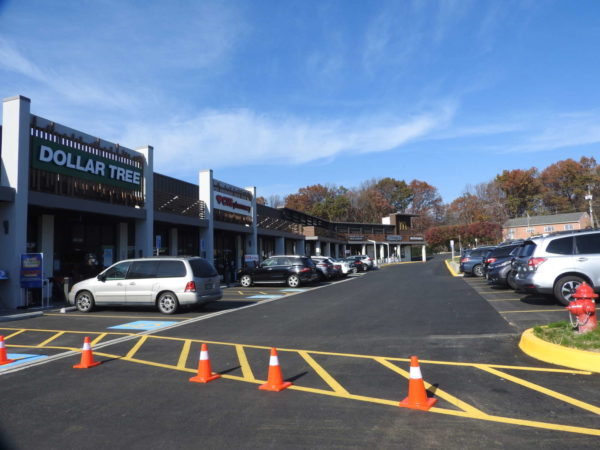
Changes to parking standards and codes could be on the horizon in the Town of Vienna.
The Department of Planning and Zoning is assessing a variety of parking issues through the Code Create Vienna process, a comprehensive effort to review and update the town’s zoning and subdivision codes.
No specific changes have been proposed yet, but the town’s limited availability of public parking, particularly in the commercial corridor around Maple Avenue, has been a topic of discussion for years.
“We are currently still working on residential zoning standards and defining the boundaries of the non-residential districts,” Vienna Deputy Planning Director Mike D’Orazio said in an email. “When we get to parking, our lead consultant ZoneCo, along with Nelson/Nygaard, will be assisting us in the review and potential update of parking standards.”
During a “Lunch & Learn” online discussion on March 5, D’Orazio detailed the parking standards that are under review, including the number of parking spaces required for different types of uses, design standards — such as landscape and lighting standards — and dimensional standards related to parking.
The review of parking space requirements will include examining on-site shared parking, such as multi-tenant or multi-use buildings.
The dimensional standards refer to the minimum dimensions for parking spaces, the width of aisles, and other spatial aspects of parking.
“Even though we updated it recently, it’s worth kind of looking at best standards and what other jurisdictions are doing for their parking,” D’Orazio said during the Lunch & Learn discussion.
Landscaping and lighting will also be considered during the parking portion of Vienna’s zoning code update. Currently, landscaping is required five feet between public street and parking areas.
The town also plans to establish bicycle parking standards for the first time in the new zoning ordinance, along with rules regulating electric vehicle charging stations.
“This is something that’s going to be increasing or trending right now as electric vehicles become more popular and adopted,” D’Orazio said. “There’s shopping centers and public spaces that are adding these EV stations. We don’t really have much in the code right now regulating those. So, that’s something that we’ll really have to look at updating.”
The estimated timeline for the code update as a whole is between 16 and 18 months.
The Department of Planning and Zoning does not have a date for when a complete draft will be ready for public hearings before the planning commission and town council. However, based on the estimated 16-18 month timeline, D’Orazio said the department anticipates that may happen in fall or winter this year.
“The Code Create Vienna process is an iterative process, and we seek community input throughout the project, not just during the public hearings,” D’Orazio said in an email.
Staff photo by Angela Woolsey

The fate of a potential senior living facility in McLean has been put on hold.
The Fairfax County Planning Commission deferred a decision to permit an independent living facility for adults 60 and older on Chain Bridge Road on March 3. The decision on the project is now scheduled for March 17 during the commission’s meeting, which will start at 7:30 p.m.
Dranesville District Commissioner John Ulfedler proposed deferring the decision in order to address issues presented during the March 3 public hearing.
Tri-State Development Companies secured a recommendation from Fairfax County’s planning staff in February for the development of the 3.23-acre site. The company has proposed replacing existing single-family dwellings at 1638 and 1642 Chain Bridge Road with 35 independent living units.
When presenting the staff report, Fairfax County senior planner Kelly Posusney noted that 15% of the dwellings will be provided as affordable, 55% of the site will be open space, and 90 total parking spaces would be provided via private garages attached to the individual dwellings and surface parking in the development.
McGuireWoods managing partner Greg Riegle, who represents Tri-State on the project, said the development would feature on-site management to assist residents with day-to-day living and amenities like fitness programs and entertainment.
“A commitment to provide the services, amenities and access to care appropriate to an aging population drives almost everything about this application,” Riegle said.
While there was some support from the public during the March 3 public hearing, many also raised questions and concerns about the potential for the project to increase traffic in the community, the development’s height, proposed setbacks, noise and light pollution, and storm water management.
Riegle said the project team is working on storm water management concerns by making downstream improvements. The plans also include on-site storm water management facilities to control an increase in runoff, addressing inadequate pipe capacity and flooding of properties downstream.
He added the proposed height of the residential units would not exceed 50 feet. The project overview lists the height of the units as between 36 and 40 feet, “depending on the style of roof.”
Multiple community members called for further evaluation of the development’s possible impact on traffic. Resident Elizabeth Yu requested that a traffic signal be installed at the intersection of Chain Bridge Road and Davidson Road, which runs perpendicular to the project site.
However, Riegle said an analysis performed by the project applicant and VDOT guidelines showed the project does not warrant installation of a signal.
Tri-State’s request to reduce the required 50-foot yard setback to between 27 and 34 feet, depending on the side of the lot, was a particular point of concern for Bobbi Bowman, the abutting neighbor to the site. She specifically requested that a proposed clubhouse, outdoor dining area, and fire pit be relocated from an area adjacent to her property to another location on the site.
“This clubhouse restaurant is essentially a business located adjacent to my home and my very low-density and quiet neighborhood,” Bowman said. “The clubhouse with its noise, and lights and happy hours is even closer to my home and our neighborhood because the applicant has asked to shrink the setbacks.”
Riegle said the clubhouse will be 83 feet from the common property line and the outdoor dining area 88 feet from the neighboring building, but he added that the issue is still being addressed.
“I think we can do some things with landscaping or the special arrangement to potentially improve that,” Riegle said. “We’ve conveyed that to the resident and we will continue to work on that between now and when this application is brought back for decision.”
Map via Fairfax County
The City of Falls Church is taking steps to show its appreciation for the arts.
When it meets tonight (Monday), the Falls Church City Council will conduct its first reading of a draft comprehensive plan amendment to establish an Arts and Cultural District. The council reviewed staff recommendations for the proposal at a work session last week.
The amendment would “add new policy goals and objectives to promote public art and a proposed Arts & Cultural District Map,” according to the staff report presented by Falls Church City planner Emily Bazemore.
“Public art is important in all communities and becomes even more so when a city goes through a period of redevelopment and reinvestment,” Bazemore said. “The policy…outlines specific short-term actions as well as long-term strategies that the City of Falls Church can utilize to work towards its vision and commitment to public arts.”
Virginia state law lets localities create arts and cultural districts within their boundaries “for the purpose of increasing awareness and support for the arts and culture.” Localities can offer tax incentives and regulatory flexibility to encourage the development of arts and cultural venues in the districts.
Since it was reviewed during a Sept. 21 city council work session, the proposal has been amended to clarify the Falls Church’s vision and emphasize providing more support for local artists. The changes were based on input from various city groups, including the Falls Church City Planning Commission, Arts and Humanities Council of Falls Church, and Falls Church Village Preservation and Improvement Society (VPIS).
“The Arts and Humanities Council as well as VPIS and the Historical Commission all recommended adding language that ties into how history plays an important role in public art and how we can use public art to utilize a way to remind us of our past,” Bazemore said.
The map for the proposed Arts and Cultural District has been revised to include houses of worship. The Arts and Humanities Council and VPIS specifically recommended St. James Catholic Church and The Falls Church Episcopal as examples of church-owned land that could be incorporated.
In addition to creating an arts district, the proposed comprehensive plan amendment suggests that Falls Church support public art by establishing a registry, expanding efforts to feature temporary art displays, and incorporating public art in parks and open spaces around the city.
The amendment recommends that the city support a public art program by allocating regular funding from its operating or capital improvements budget each year, which could also go toward arts-related festivals and events. Another option could be working with the private sector to include public art in development projects or provide monetary contributions to a public art fund.
Bazemore clarified that the amendment text does not apply to private residences.
“The thought is more commercial and, of course, public facilities and parks,” she said.
While the staff report says adopting the amendment will not have a direct fiscal impact, Councilmember Letty Hardi argued that, if Falls Church wants to encourage public art, the city will have to devote money and staff to make it a priority.
According to Hardi, the City of Falls Church currently allocates just $50,000 per year to nonprofit arts and humanities groups, funds that mostly go toward operations rather than artwork. It also does not have any staff dedicated to developing art projects.
“Policies and recommendations are only as good as where we put our budget and our priorities,” Hardi said. “So, while it’s good that we have our map and we’re talking about how important public art is, I’d love to make sure that we have people and budget dollars allocated against this…I think that’s something we should consider either in this budget cycle or future budget discussions.”
After tonight’s meeting, the proposed amendment will be referred to the planning commission. Staff has recommended scheduling a public hearing and final vote for March 22.
Image and map via City of Falls Church
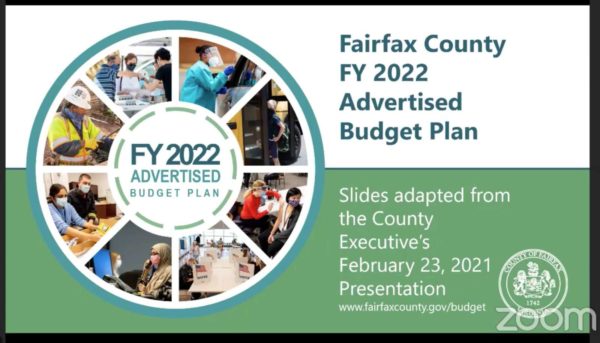
The time for community members to weigh in on Fairfax County’s FY 2022 advertised budget has arrived.
The McLean Citizens Association hosted a public meeting on Monday (Mar. 1) so residents could discuss the proposed budget with Fairfax County Chief Financial Officer Joe Mondoro and Dranesville District Supervisor John Foust.
Mondoro kicked off the meeting by discussing highlights of the budget, including the county executive’s recommendation to decrease the real estate tax rate by one cent and building on the $200.2 million the county received through the CARES Act Coronavirus Relief Fund.
During the question-and-answer portion of the meeting, attendees asked if the value of commercial properties could change as leases end and some businesses migrate to smaller workspaces.
“We’re on the edge of a pretty significant paradigm shift in terms of the ways people think about office space,” Mondoro said, adding that the office and retail component of the budget is going to need to be evaluated on an ongoing basis.
While anticipating that the value of the properties will continue to decline, he offered a bit of optimism that a balance of teleworking and in-person work will be found in coming years that could help improve the value of office space.
Mondoro also said that all markets in the area are down and “the negativity is pretty much across the board” in terms of decreases in non-residential revenue.
“There are still differences based on where the buildings are located,” Mondoro said. “Those that are more appealing in non-pandemic years are more appealing now.”
Foust argued that, while Fairfax County should focus on building up its commercial base, it also needs to reduce its reliance on real estate taxes as a source of revenue.
“We have a fundamental structural problem in that we rely so heavily on real estate taxes,” Foust said. “…Other revenue sources will need to be established in order to make the revenue more dependent on economic activity and economic success as opposed to owning a home for 20 years, which has appreciated significantly more than your income has increased.”
Audience questions also touched on the possible impact of existing and future federal financial aid.
Fairfax County received $200.2 million from the CARES Act after it was signed into law last March to cover expenses incurred due to COVID-19. The advertised budget does not assume additional stimulus funds, but county staff is monitoring another potential round of payments that could come from a new package currently being negotiated in Congress.
Mondoro tempered anticipation that more federal aid could be used to help lower the property tax rates or fund public services like affordable housing or schools, noting that the money is non-recurring and comes with stipulations regarding how it can be spent.
Foust reiterated Mondoro’s words of caution, though he said the county will take a look at all possibilities.
“There may be one-time charges in the budget we can pay through the federal funds,” Foust said. “Last time we were told, we were told that we cannot replace funds. Everything we spent had to be in addition to what we had previously planned to spend and could not be used to pay for things that we had previously planned to spend [on].”
Image via McLean Citizens Association
A new bus route in Tysons is one step closer to becoming a reality.
The Fairfax County Board of Supervisors unanimously voted Tuesday (Feb. 23) to move forward with a Phase IV-1 Mobility Analysis Study as a part of a Envision Route 7 Bus Rapid Transit (BRT) project being undertaken by the Northern Virginia Transportation Commission (NVTC).
Launched in October 2018, the project aims to connect the Mark Center in Alexandria to Tysons through Bailey’s Crossroads, Seven Corners and Falls Church along Route 7 via bus. Three phases of the study have already been conducted, with the most recent one completed in fall 2019.
The fourth phase that the board approved Tuesday is “to evaluate and determine the mobility benefits and impacts resulting from the proposed BRT from Tysons to Seven Corners,” according to the board’s agenda package. The study will also identify right-of-way concerns and any other potential issues along the proposed project corridor.
The mobility analysis study will add about 3.5 miles to a micro-simulation model that the Fairfax County Department of Transportation (FCDOT) developed to evaluate current and future traffic conditions from Tysons to the City of Falls Church.
Last year, NVTC got a $560,000 grant from the Virginia Department of Rail and Public Transportation to fund the Phase IV-1 study. The state will cover half of the cost, while the localities involved in the study will collectively match the remaining $280,000.
Under a memorandum of agreement that the Board of Supervisors approved Tuesday, Fairfax County will contribute $140,000 to the local match. The funds will come from state aid held in trust at NVTC.
In the first phase of the Envision Route 7 study, NVTC assessed the existing issues and opportunities to improve the Route 7 corridor. The study team then determined that a BRT system from Mark Center to Tysons — via the East Falls Church Metro Station — could be a viable transit solution before conducting a conceptual engineering study.
NVTC says on the project website that the mobility analysis study is expected to take 12 to 18 months.
Working with the Virginia Department of Transportation, FCDOT is supplementing NVTC’s project with a Route 7 BRT study of its own that focuses specifically on Tysons from the Spring Hill Metro station to the I-66 interchange. The county says it will host a public meeting on its study in early March.
Image via NVTC


